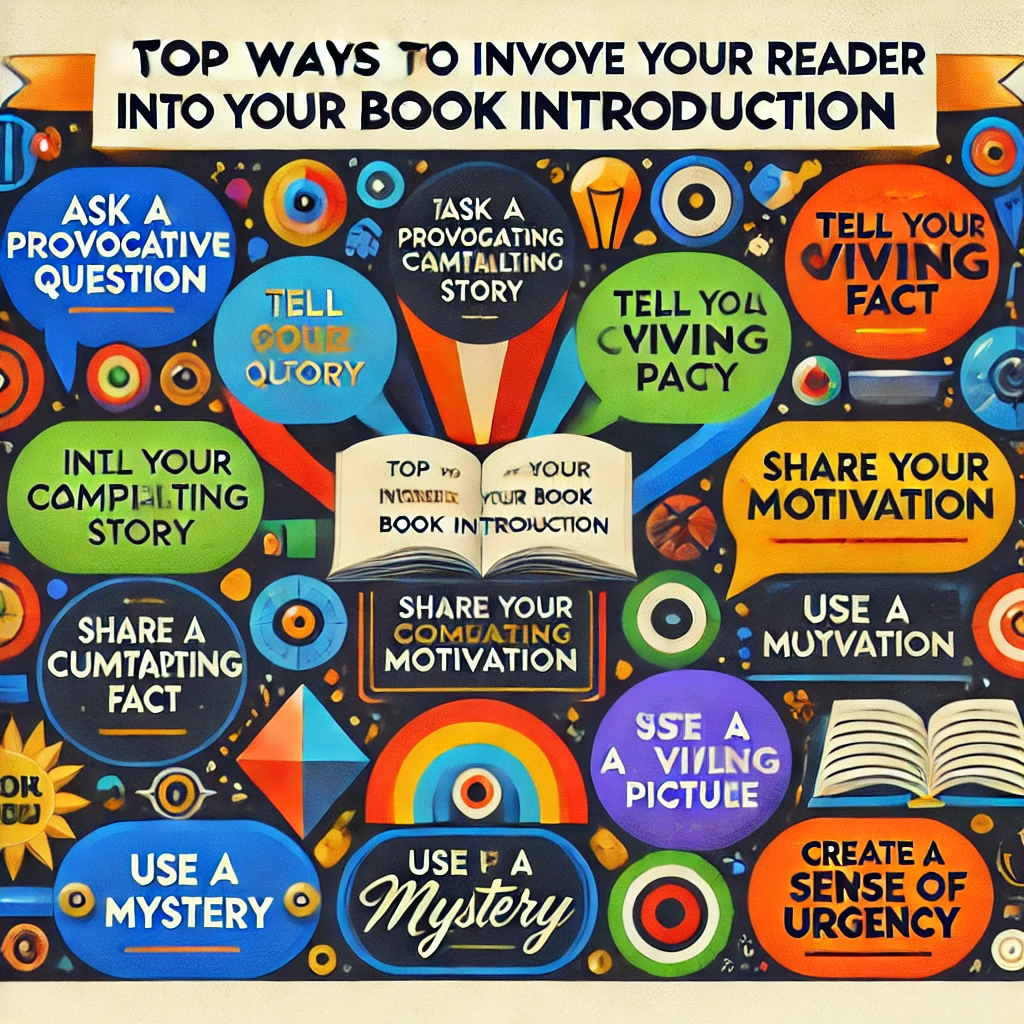An introduction of your book truly sets the ambiance of your manuscript for the readers, whether it generates an edge-of-the-seat start or takes time to build with interest and curiosity and invites readers into your world. However, not many newbie ghostwriters understand the art of starting their next masterpiece – yet an engaging introduction is vital for keeping readers invested
As a renowned organization with professional ghostwriters onboard, we understand the importance of crafting compelling book introductions. In this blog, we’ll explore the top ways to invite readers into your book introduction and make a lasting impression.
-
Start with a Captivating Hook
The first sentence of your book should immediately draw the reader in. A robust hook can be:
- A shocking fact that challenges expectations.
- A thought-provoking question that sparks curiosity.
- A compelling statement that sets the stage for your narrative.
Example: “Before I learned the truth, I thought my family was normal.”
A great hook compels readers to continue turning the pages, eager to uncover more.
-
Establish a Connection with the Reader
Readers want to feel like they are part of the story. Using a conversational tone or directly addressing the reader creates an immediate connection.
- Use second-person narration (“Imagine waking up in a world where…”) to involve the reader.
- Share relatable experiences that make them feel understood.
- Use empathy to create an emotional bond.
This approach is particularly effective in self-help books and memoirs.
-
Introduce Your Unique Voice and Style
Your introduction is a chance to showcase your writing style. Whether it’s witty, dramatic, poetic, or straightforward, maintaining a consistent tone helps readers understand what to expect.
- For fiction: Establish the mood of the story (mysterious, humorous, adventurous).
- For nonfiction: Let your expertise shine with confidence and clarity.
Professional ghostwriters ensure that the introduction aligns with the overall tone and theme of the book.
-
Pose an Engaging Question
Questions immediately engage the reader’s mind and invite them to think. Consider these examples:
- “What would you do if you had only 24 hours to live?”
- “Why do some people succeed while others struggle endlessly?”
Posing an intriguing question early on encourages readers to seek answers within your book.
-
Set the Scene with Descriptive Imagery
Creating vivid imagery helps readers visualize your world, making them feel like they are experiencing the story firsthand.
- Use sensory details: Sight, sound, smell, touch, and taste.
- Show, don’t tell: Instead of “The night was cold,” try “A crisp wind howled through the empty streets.”
- Use metaphor and simile to enhance descriptions.
This technique is essential for ghostwriting for fiction, and creative storytelling.
-
Establish the Central Conflict or Problem
Conflict drives every great story. Introducing a problem early on piques curiosity and sets the stage for what’s to come.
- For fiction: Present a dilemma, a mysterious event, or a dramatic moment.
- For nonfiction: Highlight a challenge the book will help the reader overcome.
Readers should feel compelled to continue reading to see how the problem unfolds.
-
Introduce the Main Character (for Fiction)
Characters are the heart of any story. Introduce your protagonist in a way that makes them instantly relatable or intriguing.
- Give them a defining trait or habit that makes them stand out.
- Show their emotions through actions rather than descriptions.
- Hint at their journey—what they desire and what stands in their way.
An unforgettable character introduction ensures readers stay invested in the story.
-
Share a Personal Anecdote (for Nonfiction)
A personal story adds authenticity and relatability, especially in memoirs and self-help books.
- Use storytelling techniques to make it engaging.
- Highlight a lesson learned that ties into the book’s theme.
- Keep it brief yet impactful to maintain reader interest.
This approach works well for nonfiction ghostwriters crafting compelling introductions.
-
Define the Purpose of the Book
For nonfiction books, clarity on what the reader will gain from the book is crucial. Clearly state:
- What problem does the book solve
- Who the book is for
- What makes this book different from others on the same topic
Providing this information upfront sets expectations and reinforces the book’s value.
-
Create a Sense of Urgency
Encouraging readers to act immediately increases engagement. Consider statements like:
- “By the end of this book, you’ll know exactly how to transform your life.”
- “If you don’t take action today, you might regret it tomorrow.”
This technique works well in self-improvement and business books, making readers feel that they need to keep reading to avoid missing out.
-
Keep It Concise and Impactful
While introductions should be engaging, they shouldn’t drag on. Aim for:
- A strong hook in the first few lines
- Key themes introduced within the first page
- Minimal fluff—every word should serve a purpose
A concise introduction respects the reader’s time while drawing them deeper into the book.
-
End with a Strong Transition
A compelling introduction should seamlessly lead into the rest of the book. A strong transition:
- Hints at what’s coming next
- This leaves readers wanting more
- Creates a natural flow into the first chapter
Example: “But before we dive into the secrets of success, let’s start by understanding the biggest obstacles that hold most people back.”
A well-crafted transition keeps the reader engaged and eager to continue.
Conclusion
Your book’s introduction is your first and best chance to captivate your readers. Whether it’s through a powerful hook, vivid storytelling, or compelling questions, these techniques ensure that your introduction invites readers in and keeps them engaged.
At Book Planets, we specialize in eBook writing services and book editing services to help authors craft unforgettable introductions. Whether you’re writing fiction or nonfiction, our professional ghostwriters can refine your opening pages for maximum impact.
Need help crafting an irresistible book introduction? Contact Book Planets today!
Frequently Asked Questions (FAQs)
-
Why is a book introduction so important?
A book introduction sets the stage for readers, drawing them into the story or subject matter. It helps create interest, establishes the tone, and encourages readers to continue.
-
What are some common mistakes to avoid in a book introduction?
Common mistakes include overly long introductions, lack of a clear hook, too much background information, and failure to connect with the reader emotionally.
-
How can I make my book introduction more engaging?
Use a compelling hook, pose intriguing questions, share a personal anecdote, or establish the main conflict early to keep readers interested from the start.

